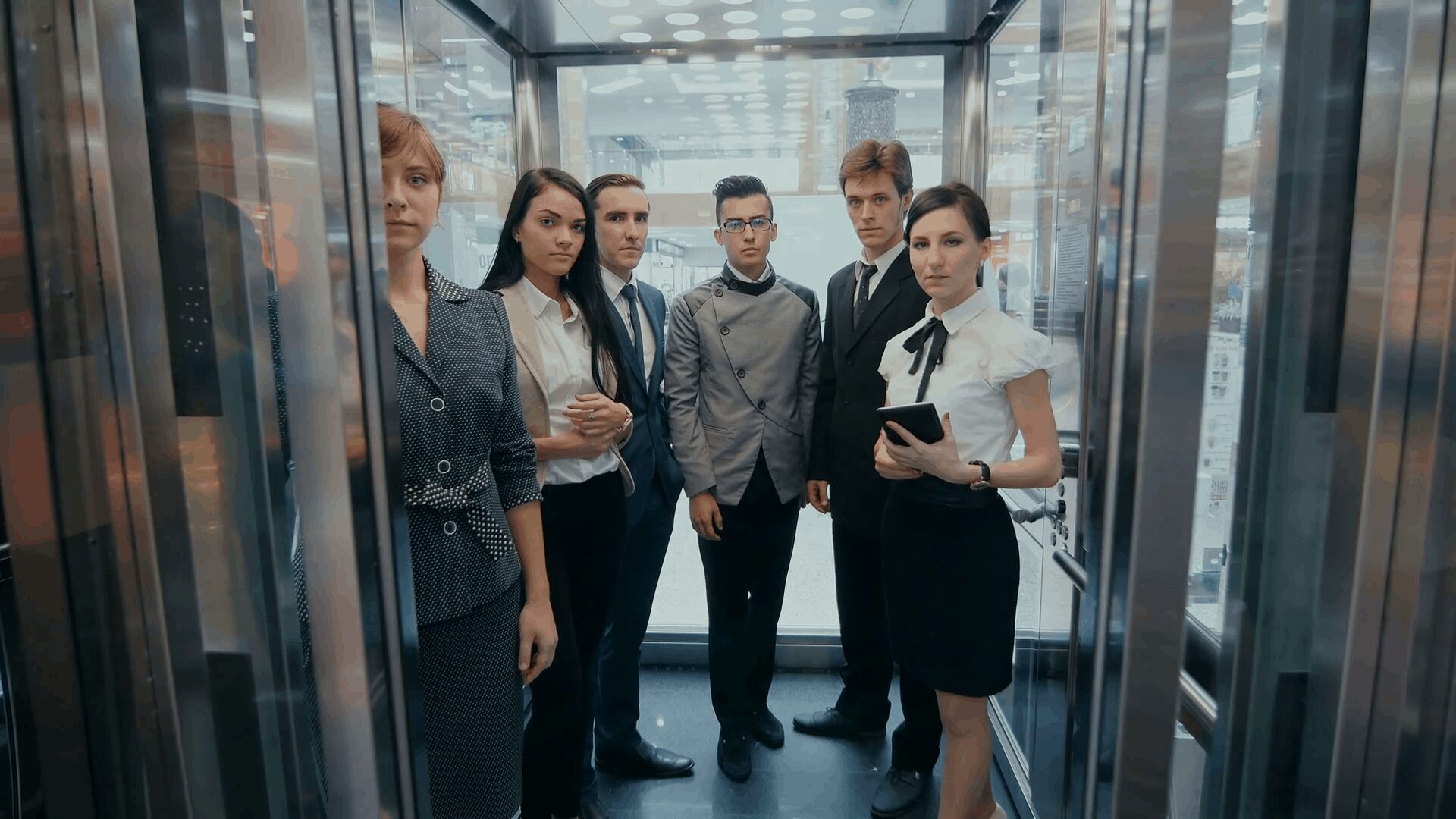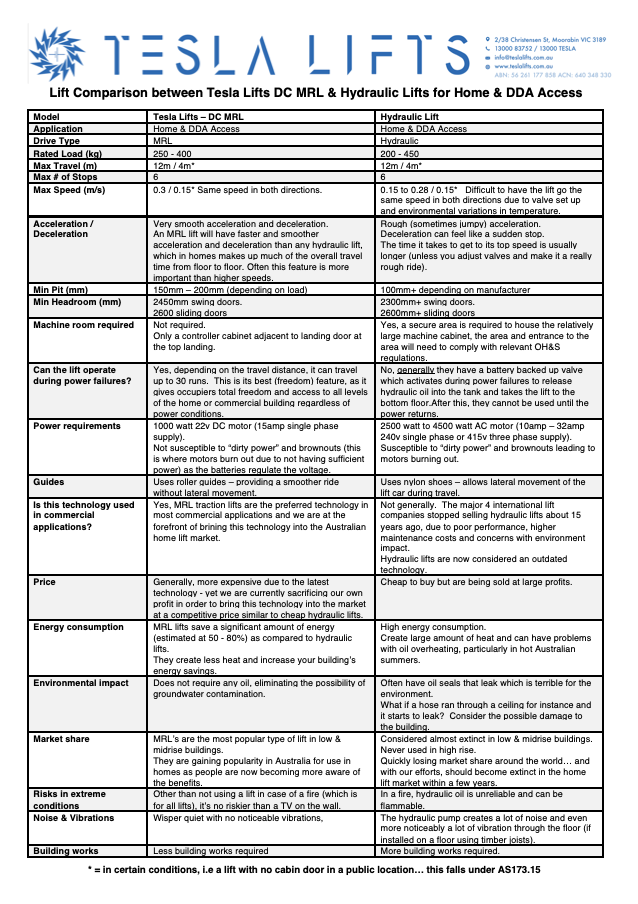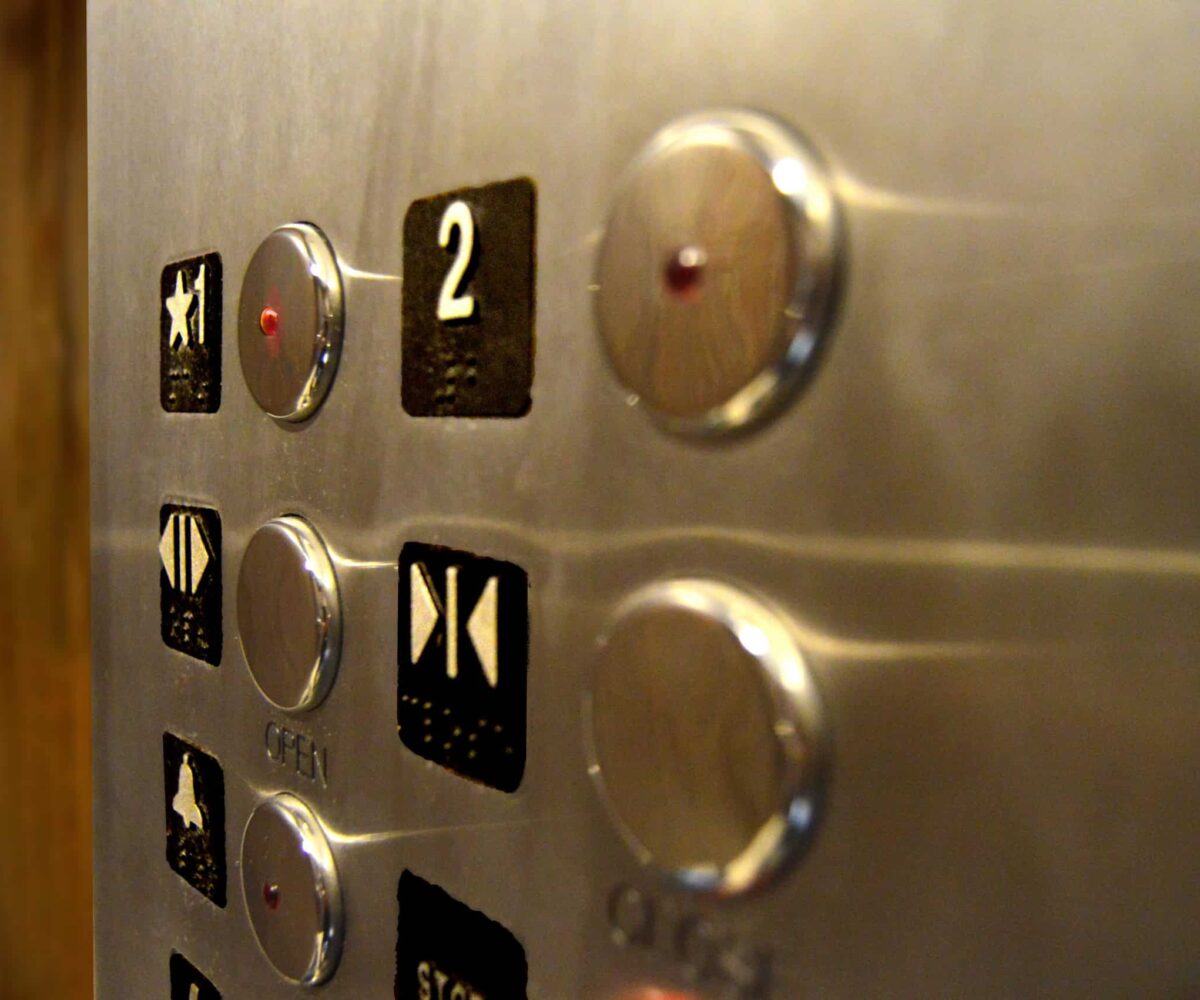



Do I choose Hydraulic or MRL Electric Lift?
Hydraulic lifts use pumped hydraulic oil in pistons to move the lift up and down in the shaft. Hydraulic lifts require a tank that is filled with oil, an electronic valve block which controls the oil and a pump that is located inside the tank. These lifts are typically very slow and have a limitation on the number of levels they can service. Hydraulic lifts also tend to be noisy and consume a lot of electrical power.
These lifts are however common in residential, childcare, aged care, schools and other applications where the number of levels served is very low. They are popular due to their lower up-front cost. But the lifts come with long term challenges that tend to hurt the end customer. The most common problem that customers of hydraulic lifts face is the un-reliability of the valve block, faults in the valve block can cause the lift to level incorrectly with the floor, not accelerate smooth and sometimes cavitate. Since the hydraulic fluid is sensitive to temperature, the performance characteristics of the lift vary significantly depending on the weather. Another drawback is the possibility of oil leaks in the machine room and the risk that they pose as a fire hazard. Hydraulic systems also need electrical boards to function, so you’ll have a double whammy of replacing faulty boards while also dealing with costly hydraulic issues.
Due to the above limitations, Modern Architects tend to specify more MRL Electric lifts.
Tesla lifts is pleased to announce our battery powered MRL Electric lift the Tesla Mangusta.
The Tesla Mangusta is an electric traction Machine room less lift that is battery powered. This lift can be installed in shafts with low pit – 150mm and low headroom –2450mm (depending on configuration and size), which makes it the ideal fit for all applications that previously used a hydraulic lift.
Furthermore, the Tesla Mangusta only consumes a maximum of 300w of power at any given time. It consumes less power to operate than a hair dryer and can operate from a standard 240v power outlet. The Tesla Mangusta can also operate up to 30 times in the event of a power blackout thanks to our battery and DC technology.
This makes the Tesla lift ideal for installations that require AS1735.18 residential home lifts, AS1735.16 limited mobility access lifts and AS1735.12 lift code for disabled access making it the perfect fit for schools, hospitals, childcare, aged care, sport facilities, RSL clubs, private homes etc.
We have put together a table that compares the features of Hydraulic and Electric MRL Traction lift below to help you decide.
| HYDRAULIC LIFTS | TESLA MANGUSTA (MRL ELECTRIC LIFT) | |
| CONTROLLER | Requires dedicated room | Installed in shaft wall |
| SPEED | 0.15-0.3 m/s varies with temperature variations | 0.3 m/s |
| POWER | Input – 3000-6000W Nominal | 300 Watts |
| BLACKOUT FRIENDLY | No, stops operation in the event of power failure | Yes, can operate up to 30 times |
| NOISE | 80 dB Nominal | 60dB Nominal |
| HYDRAULIC FLUID | Hydraulic oil | N/A |
| COST | Low up front costs, Higher long term costs | Higher up front costs, lower long term costs |
| PIT AND HEADROOM | Low Pit and headroom | Low pit and headroom |
| SHAFT |
Please click image below to read an in-depth comparison





